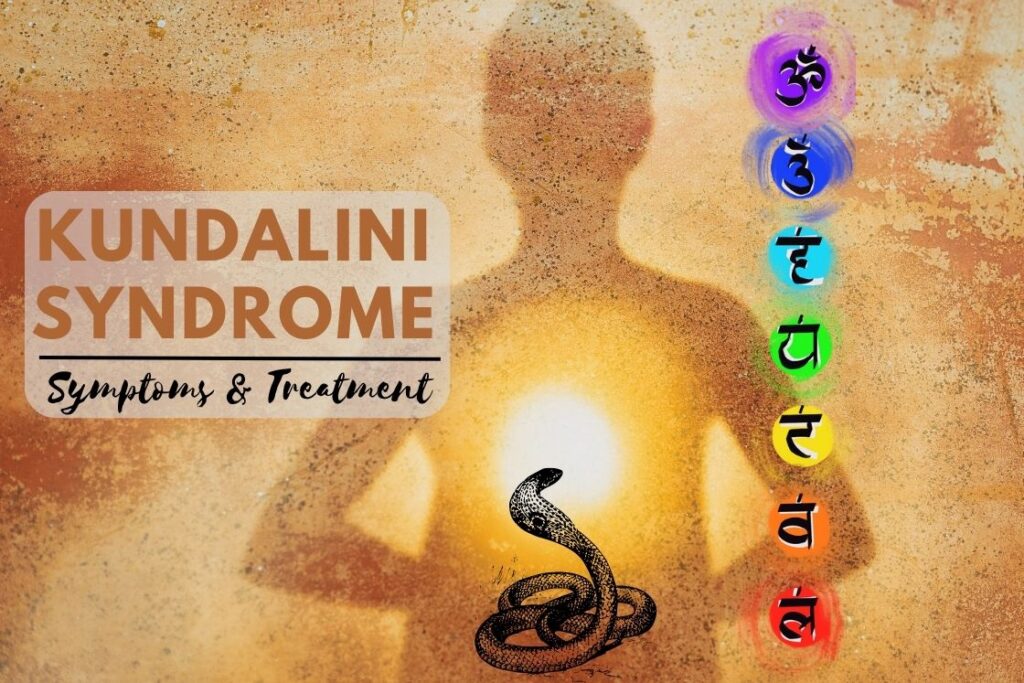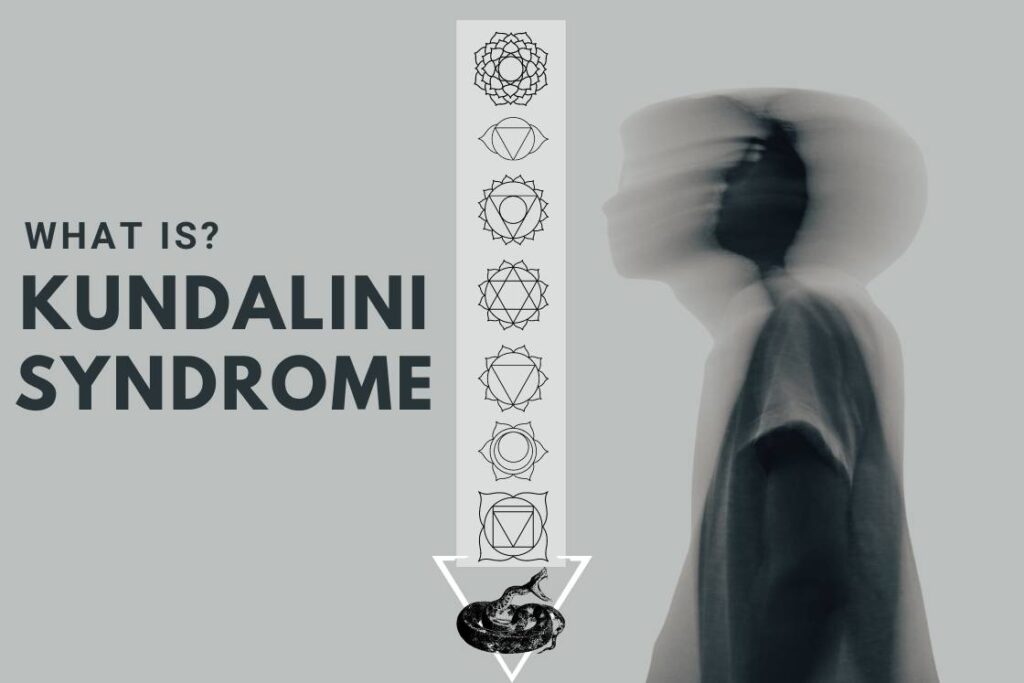
When we talk about spirituality, meditation, and divine energy, kundalini is the one word that makes a frequent mention in discussions.
Kundalini is a dormant serpent-like divine energy that sits coiled at the base of your spine, i.e. the Muladhara Chakra. It is said that when this energy is awakened, it travels along your spine, piercing through major 7 chakras to reach the crown of your head, where Sahasrara Chakra is present. It’s the union of Kundalini Shakti with Shiva.
When kundalini awakening happens, you tend to unleash a hidden power within yourself. With this power, you can tap into the higher realms of your consciousness, may establish a connection with the cosmos, and experience everything in a new light. Overall, it’s a remarkably powerful spiritual experience.
However, being a powerful energy, kundalini awakening also comes with dangers and warnings. It can prove to be dangerous when proper precautions and guidelines are not adhered to.
When kundalini awakening happens in a person who is not yet prepared for it, without warning, the person may experience unusual and negative symptoms which are collectively termed Kundalini Syndrome.
Let us explore the kundalini syndrome symptoms in detail and also see how it can be treated.
What is Kundalini Syndrome?

Kundalini syndrome is the name given to the set of unpleasant, negative experiences one undergoes when kundalini is not properly handled or it gets awakened suddenly. It’s also called the “Kundalini crisis” or “spiritual emergency”.
A person who is experiencing kundalini syndrome symptoms can be said unprepared (physically, emotionally, or spiritually) for the tremendous power kundalini awakening brings, yet their kundalini has awakened.
However, awakening happened to spiritually advanced people only, sometimes it can happen to anyone. In case it happened suddenly to anyone, kundalini energy rises accidentally abruptly at a higher rate and the person’s body cannot handle the sudden surge of this energy. This results in dangerous effects of kundalini awakening.
Kundalini syndrome may lead to a plethora of physical, mental, and sexual problems which affect your daily life. It can be tremendously difficult, traumatic and chaotic for individuals.
But why does it happen?
There is a proper process of kundalini awakening in which four stages of awakening are described.
If you do not follow the protocols of the kundalini awakening process and perform them without proper guidance of a master, the energy may get stuck in the lower chakras or shoot up prematurely. This will not be in your favor and the experiences you may have may be negative, drastic, and extreme.
To awaken kundalini effectively, first you should open your chakras and work towards purifying the Sushumna Nadi. The chakras and Sushumna Nadi lie on the spine through which the kundalini rises. Mantra chanting, pranayama, Kundalini Yoga and meditation, and specific mudras are a few ways through which you can achieve this opening and cleansing.
What causes Kundalini Syndrome?
Kundalini syndrome is a result of the incorrect, sudden, and accidental rise of the kundalini energy.
It can happen due to certain triggers or unexpected and stressful life events such as the death of a loved one, a fatal accident, or receiving heartbreaking news. The shock of such events may lead to an abrupt awakening of the kundalini.
Some other reasons can be overactivation of the lower chakras, lack of proper guidance, blocked emotions, recreational drug use, or sheer bad luck.
What are the symptoms of Kundalini Syndrome?

The perils of accidental and premature kundalini awakening are what make up the symptoms of kundalini syndrome. As stated previously, the symptoms can be physical or mental which arise because your body is unable to adjust to the sudden shift.
The symptoms of Kundalini Syndrome can vary in severity and include a variety of physical, sensory, perceptual, and psychological problems.
The symptoms of kundalini syndrome can be broadly categorized into the following 4 categories:
1. Motor symptoms – are those kundalini syndrome symptoms which appear in the physical body and can be noticed by anybody. It includes;
- Muscle spasms and cramps
- Involuntary body movements such as jerks, tremors, shaking
- Unexplaininbale changes in breathing patterns
2. Somatosensory symptoms – are those kundalini syndrome symptoms which you feel physically or mentally through the conscious perception of touch, pressure, pain, temperature, and vibration. It includes;
- A sudden rush of energy or a feeling of electricity pulsating throughout the body or in some part of the body
- Itching, prickling, tinglings on the skin
- Feeling hot and cold extremities
- Overly sensitive sense organs
- Numbness and pain in limbs
- Pressure in the skull, intense headache
3. Audiovisual symptoms – Kundalini syndrome may result in one listen to unexpected sounds. Symptoms include;
- Hearing internal sounds like whistling, chirping, hissing
- Hearing internal voices
- The ringing of the ears
4. Mental symptoms
- Sudden speeding up, slowing down or stopping of thoughts
- Feeling larger than the body
- Detachment from the reality
- Astral, psychic and out-of-body experiences
- Mental fog, chaos, confusion, panic, lack of concentration
- Increased feelings of love, compassion, pleasure, devotion, joy, peace, bliss
- Increased feelings of hatred, depression, fear, anxiety
- Increased sense of creativity, self-expression, and understanding
- Sudden changes in mood, uncontrollable laughing or crying
- Enhanced awareness, memories of past life, healing powers
Some other anecdotal symptoms are:
- Extreme hyperactivity or fatigue
- Changes in eating and sleeping habits
- Digestive problems
It is not necessary that you might experience every symptom mentioned above. While some symptoms may be more profound than others, know that they arise due to sudden and extreme energetic shifts.
How long does kundalini syndrome last?
The duration of kundalini syndrome differs for each person. For some, it may last only a few days or weeks, while for others, the syndrome may go on for months and sometimes years at an end.
There is no definite timeline for how long a person may experience kundalini syndrome. However, if you take the right steps and perform some chakra cleansing techniques and grounding meditations, you may find a gradual decline in the symptoms.
Is Kundalini Syndrome really dangerous?
The answer to this is not definitive.
Kundalini awakening has been hailed as a magical experience that changes your perception and takes you forward in your journey to enlightenment. But this is only when the kundalini awakening happens in the right manner.
When you have performed the kundalini awakening process under the guidance of a kundalini teacher and made sure to follow the right path, the awakening will be a walk in the park for you.
On the contrary, if you have been following a process based solely on knowledge gained from other sources and sought no guidance from a guru, there is a high chance you may encounter kundalini syndrome.
Unfortunately, there is a large population who get affected by this and report uncommon and drastic changes in their behavior, psyche, emotions, sensations, body, and relations. People often tend to get depressed, have hallucinations, or project a behavior akin to severe mental illness.
Nevertheless, it is not something to be scared of. The Kundalini process can be hard for the mind and body to recover from, even for individuals who regularly perform meditative practice and have a steady temperament.
How to treat kundalini syndrome?
First and foremost, you should stop with any energy-generating exercises and immediately work towards grounding yourself. You do not want to further propel the rise of the kundalini energy to aggravate the kundalini syndrome symptoms.
Grounding yourself will help in gently bringing the uncoiled serpent energy back to its resting place.
Secondly, do not seek out superfluous and hardcore solutions such as alcohol or drugs as these will further deepen the kundalini syndrome symptoms.
Apart from the above, a few more tips you should take into consideration:
- Make changes in your diet by following a vata-pacifying regime
- Avoid eating any form of meat
- Eat full and heavy meals to keep your body settled, nourished, and grounded
- Use chakra-balancing herbs that possess earth energies and qualities
- Focus on staying away from stressful situations and the environment
- Walk barefoot in your garden, hug a tree or spend time in the lap of nature to connect with the earth
- Take salt-water baths
- Start doing physical exercises and stretches to remove excess energy, stress, and anxiety
- Temporarily stop with mantra chanting, especially for chakras
- Break away from any or all spiritual practices for a while
- Avoid stimulants such as coffee and tea
- Make sure you get plenty of restful sleep
- Abstain from sexual activities temporarily
Even after these steps, if you notice that the kundalini syndrome symptoms are not decreasing or are getting worse, you should seek out a professional healer, kundalini teacher, or a guru for individual guidance.
Conclusion
All said and done, you shouldn’t be scared of the kundalini awakening process in general. If you follow the guidelines, make sure your chakras are fully activated and all energy channels are cleansed, you will not have to worry about experiencing kundalini syndrome.
Make sure you are well educated and understand the process thoroughly before taking up exercises and practices for kundalini awakening.
The post Kundalini Syndrome: Dangers of Kundalini Awakening (Symptoms & Treatment) appeared first on Fitsri.